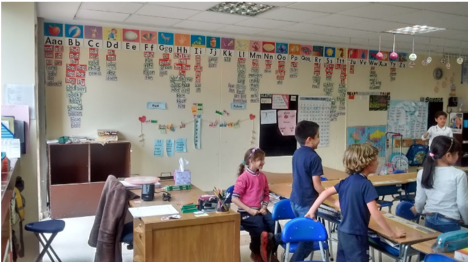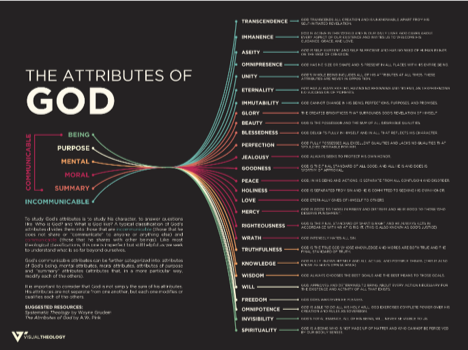Inhabiting the Christian Story (by Raphael Haeuser)
We teach who we are. As Christians, we should allow the Bible to shape our identity, relationships, priorities, etc. If scripture changes us, then the way we teach should also change. Therefore, we should “aspire to ‘incarnate’ the biblical vision, living it out in the day to day interactions of the classroom.”[1] A helpful way to do this is by inhabiting the Christian story because it is a natural vehicle to answer the basic worldview questions. Stories have a plot (answering ‘what’s wrong?’ and ‘what’s the remedy?’), characters (answering ‘who are we?), and setting (answering ‘where are we?’).[2]
 The biblical story can be divided into 4 acts: Creation, Fall, Redemption, & Consummation.[3] Right now we are living in an interlude between Acts 3 and 4. The kingdom has already been inaugurated, but has not yet been fully established. Our calling now is both: to proclaim the good news of redemption in Christ, and to live out our redeemed creational role, being channels of God’s blessing.
The biblical story can be divided into 4 acts: Creation, Fall, Redemption, & Consummation.[3] Right now we are living in an interlude between Acts 3 and 4. The kingdom has already been inaugurated, but has not yet been fully established. Our calling now is both: to proclaim the good news of redemption in Christ, and to live out our redeemed creational role, being channels of God’s blessing.
With this in mind, we can answer the worldview questions: (1) Who are we? We are image-bearers, having inherent value and creativity, but we are also sinners in need of repentance and redemption; (2) Where are we? We live in God’s good creation which should be looked after, and in a cultural world, reflecting our image-bearing and sinful capacities; (3) What’s wrong? We experience death and broken relationships at personal, social, spiritual and environmental levels because of our quest for autonomy; and (4) What’s the remedy? We need to turn to Christ to find healing, fulfillment and purpose, and teach and invite others to do the same.
 However, the gospel story is not the only story out there. Our students are exposed to a number of these competing narratives. For instance, consumerism is a story that has a religious appeal,[4] and advertising frequently mimics religious parables.[5] This story answers worldview questions like this: (1) Who are we? We are ‘empty buckets’ who need to work to buy things to fill it; (2) Where are we? We live in a natural world waiting to be exploited, and in a social world of disposable relationships; (3) What’s wrong? We experience emptiness because we are not benefiting from technological progress; and (4) What’s the remedy? We have to buy things to find fulfillment and happiness. As Christians, we must recognise the influence these other stories have on our students and develop a plan to address them.
However, the gospel story is not the only story out there. Our students are exposed to a number of these competing narratives. For instance, consumerism is a story that has a religious appeal,[4] and advertising frequently mimics religious parables.[5] This story answers worldview questions like this: (1) Who are we? We are ‘empty buckets’ who need to work to buy things to fill it; (2) Where are we? We live in a natural world waiting to be exploited, and in a social world of disposable relationships; (3) What’s wrong? We experience emptiness because we are not benefiting from technological progress; and (4) What’s the remedy? We have to buy things to find fulfillment and happiness. As Christians, we must recognise the influence these other stories have on our students and develop a plan to address them.
How we do this raises at least two questions about our educational practices. First, we must ask ‘what story are we teaching?’ We must intentionally live out our vocation in the biblical story, which will give us a different approach to the learning-teaching process in two ways: (1) We will develop a virtuous Christian character and take it to the classroom, and by doing so awaken a similar desire in our students. Our lives provide an example of the maturation process; and (2) we will evaluate the educational techniques we use, as well as classroom dynamics we foster, to see whether they are coherent with the Christian story and worldview.
 Second, we must ask ‘what story are we teaching?’ To an outside observer, many of the specific things we do in the classroom might appear to be the same (2+2 is still 4), but a deeper examination will reveal connections to the bigger story. Maths can be used to make us more competitive or more generous, to help us take care of creation or exploit it.
Second, we must ask ‘what story are we teaching?’ To an outside observer, many of the specific things we do in the classroom might appear to be the same (2+2 is still 4), but a deeper examination will reveal connections to the bigger story. Maths can be used to make us more competitive or more generous, to help us take care of creation or exploit it.
As we press into our faith and bring it into our professional practices, are we helping our students grow as persons, or merely becoming better consumers? The difference lies in the greater story that we inhabit and teach by.
Raphael Haeuser
Teacher Education Services
TeachBeyond Brazil
[1] David I. Smith and John Shortt, The Bible and the Task of Teaching (Stapleford: Stapleford Centre, 2002), 38.
[2] J. Richard Middleton and Brian J. Walsh, Truth Is Stranger than It Used to Be : Biblical Faith in a Postmodern Age (Downers Grove, IL: InterVarsity, 1995).
[3] For those interested in digging deeper into how the biblical story shapes us and/or education, I highly recommend: Harold Klassen, Visual Valet: Personal Assistant for Christian Thinkers and Teachers (Amazon, 2015); and Craig G. Bartholomew and Michael W. Goheen, The Drama of Scripture : Finding Our Place in the Biblical Story, 2nd ed. (Grand Rapids, MI: Baker Academic, 2014).
[4] James K. A. Smith, Desiring the Kingdom: Worship, Worldview, and Cultural Formation, Cultural Liturgies, v. 1 (Grand Rapids, MI: Baker Academic, 2009).
[5] Neil Postman, The End of Education: Redefining the Value of School (New York: Alfred A. Knopf, 1995).





